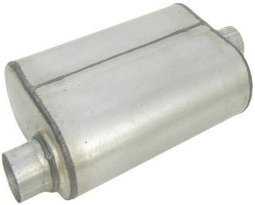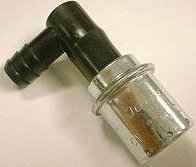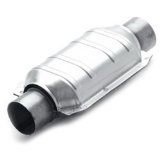Automotive Emission Controls and You

Controlling tailpipe emissions is considered important in the United States and growing around the world except for a few tough holdouts. If the U.S. is so serious about regulating automotive emission controls and controlling tailpipe output then how come some states require no testing at all?
Some States have rigorous testing and some only have very basic testing procedures that test tailpipe emissions at idle. These engine idle tests might certify that the vehicle exhaust emissions are within the limits set by the local or federal laws even though they may not under road conditions.
Although most States require a yearly vehicle emission control test it would seem more efficient if all States where doing something. Some states like New Jersey that use to have some of the toughest standards and required a yearly inspection have pulled back to an every other year inspection process.
NJ has also done away with some safety inspections and now the primary focus is on the emissions portion. This is one state that will test the tailpipe output of the vehicle while it is operating under a variety of load conditions and speeds. In the auto repair business we started calling this the dino test.
As in the vehicle is run on a device that is extremely similar to a dynamometer that is used to measure horsepower and torque. Some would consider this an improvement over exhaust testing during idle speeds with no load on the engine. Although impossible for the local repair shop without the equipment to accurately test or guarantee repairs.
I believe California may have the toughest standards with yearly smog inspections the state that I live in requires no inspection and no emissions testing at all. It could also be the reason that I see more very old cars like mavericks and pintos here then I have anywhere else in the country.
Look I understand the economy is bad and that individual States are struggling to meet budgets. I know that additional testing could mean more costs and hiring more workers at the state or federal level. But if we are the United States shouldn’t we have some nationwide consistency?
Development of emissions control devices

Automobile technology manufacturers have been working in the direction of reducing automotive air pollutants since the 1950’s when car tailpipes were found to be part of choking smog in Los Angeles. California established the first standards for automotive emission output in 1967.
The invention of the PCV system or positive crankcase ventilation system was the first step in bringing crankcase fume venting under control. Prior to that crankcase emission were vented to the valve cover and into the air. The PCV system pulled those toxic fumes back into the engine to be re-burned with the air fuel mixture.
One of the next major automobile technology developments was the creation of an air injection system that would help clean up un-burnt hydrocarbons and reduce carbon monoxide by pumping air into the exhaust system soon after the combustion process was completed.
Another big advancement in automotive emission controls was to the fuel we put in the gas tank. Removing lead from gasoline started in around 1970. Removing lead from gasoline brought a lot of benefits. For one thing it eliminates the emission of lead particles from the automobile’s exhaust which was one of the worst byproducts of combustion at the time.

The catalytic converter is probably one of the emission controls that we are most familiar with. The catalytic converter provided a means for oxidizing the CO and HC output in the engine exhaust. Beginning in about 1975 passenger cars and light trucks has been equipped with these catalytic converters.
One of the latest developments would be the evaporative emission control system. Although this is far from new as it has been around since the 70s. This is where fumes from the fuel tank are not allowed to escape into the atmosphere. These fumes are collected and added to the intake charge to be burned in the combustion chamber similar to the way crankcase gases where handled in the late 60’s.
The latest version of this automotive emission controls system has caused problems for many motorists. The federal government decided to make this an integrated system that was capable of notifying the driver and state-level inspection agencies if the system was not working properly. The evap system is tested when the key is turned on by either pulling a vacuum on the system or lightly pressurizing it to test its integrity.
This means if there is a problem with your fuel vapor control system it is quite possible that it will turn on the check engine light. I put together an article about this gas cap code problem on my other website. If you are interested in seeing more posts from this site the next link will take you back to the auto repair information blog.

